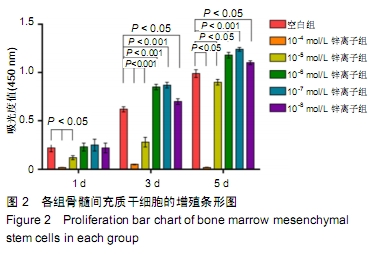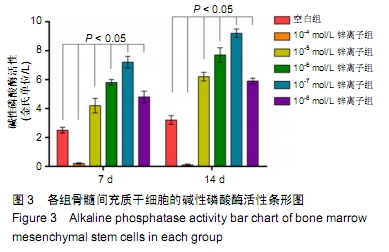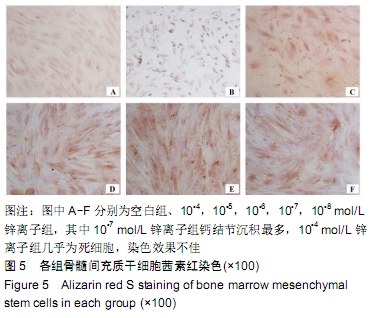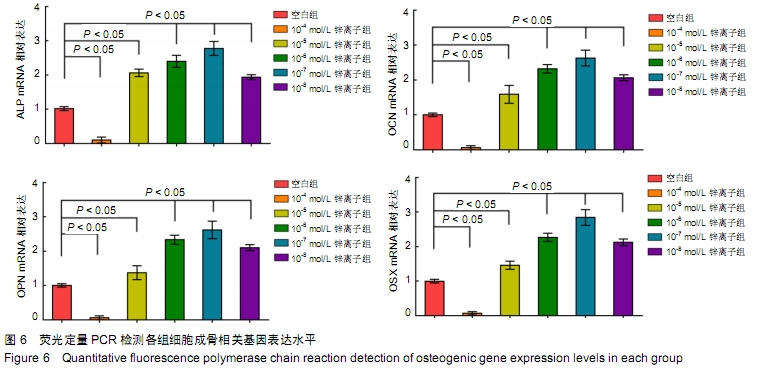[1] AASETH J, BOIVIN G, ANDERSEN O. Osteoporosis and trace elements--an overview. J Trace Elem Med Biol. 2012;26(2-3):149-152.
[2] PEREZ RA, SEO SJ,WON JE, et al. Therapeutically relevant aspects in bone repair and regeneration. Mater Today. 2015;18(10):573-589.
[3] JEFFERIES SR. Bioactive and biomimetic restorative materials: a comprehensive review. Part I. J Esthet Restor Dent. 2014;26(1):14-26.
[4] JEFFERIES S. Bioactive and biomimetic restorative materials: a comprehensive review. Part II. J Esthet Restor Dent. 2014;26(1):27-39.
[5] CHEN J, ZHANG X, CAI H, et al. Osteogenic activity and antibacterial effect of zinc oxide/carboxylated graphene oxide nanocomposites: Preparation and in vitro evaluation. Colloids Surf B Biointerfaces. 2016;147:397-407.
[6] AN S, GONG Q, HUANG Y. Promotive Effect of Zinc Ions on the Vitality, Migration, and Osteogenic Differentiation of Human Dental Pulp Cells. Biol Trace Elem Res. 2017;175(1):112-121.
[7] TANG Y, CHAPPELL HF, DOVE MT, et al. Zinc incorporation into hydroxylapatite. Biomaterials. 2009;30(15):2864-2872.
[8] STORRIE H, STUPP SI. Cellular response to zinc-containing organoapatite: an in vitro study of proliferation, alkaline phosphatase activity and biomineralization. Biomaterials. 2005;26(27):5492-5499.
[9] SANNA A, FIRINU D, ZAVATTARI P, et al. Zinc Status and Autoimmunity: A Systematic Review and Meta-Analysis. Nutrients. 2018;10(1):E68.
[10] PARK KH, PARK B, YOON DS, et al. Zinc inhibits osteoclast differentiation by suppression of Ca2+-Calcineurin-NFATc1 signaling pathway. Cell Commun Signal. 2013;11:74.
[11] PARK KH, CHOI Y, YOON DS, et al. Zinc Promotes Osteoblast Differentiation in Human Mesenchymal Stem Cells Via Activation of the cAMP-PKA-CREB Signaling Pathway. Stem Cells Dev. 2018;27(16): 1125-1135.
[12] XIAO DQ,YANG F,ZHAO Q,et al. Fabrication of a Cu/Zn co-incorporated calcium phosphate scaffold-derived GDF-5 sustained release system with enhanced angiogenesis and osteogenesis properties. RSC Advances, 2018;52(8):29526.
[13] PINA S, CANADAS RF, JIMÉNEZ G, et al. Biofunctional Ionic-Doped Calcium Phosphates: Silk Fibroin Composites for Bone Tissue Engineering Scaffolding. Cells Tissues Organs. 2017;204(3-4): 150-163.
[14] RAZ M, MOZTARZADEH F, KORDESTANI SS. Sol-gel Based Fabrication and Properties of Mg-Zn Doped Bioactive Glass/Gelatin Composite Scaffold for Bone Tissue Engineering. Silicon. 2018;10(2): 667-674.
[15] LIU YJ, SU WT, CHEN PH. Magnesium and zinc borate enhance osteoblastic differentiation of stem cells from human exfoliated deciduous teeth in vitro. J Biomater Appl. 2018;32(6):765-774.
[16] LIANG D, YANG M, GUO B, et al. Zinc inhibits H(2)O(2)-induced MC3T3-E1 cells apoptosis via MAPK and PI3K/AKT pathways. Biol Trace Elem Res. 2012;148(3):420-429.
[17] HU JY, ZHANG DL, LIU XL, et al. Pathological concentration of zinc dramatically accelerates abnormal aggregation of full-length human Tau and thereby significantly increases Tau toxicity in neuronal cells. Biochim Biophys Acta Mol Basis Dis. 2017;1863(2):414-427.
[18] SUH KS, LEE YS, SEO SH, et al. Effect of zinc oxide nanoparticles on the function of MC3T3-E1 osteoblastic cells. Biol Trace Elem Res. 2013;155(2):287-294.
[19] SHEARIER ER, BOWEN PK, HE W, et al. In Vitro Cytotoxicity, Adhesion, and Proliferation of Human Vascular Cells Exposed to Zinc. ACS Biomater Sci Eng. 2016;2(4):634-642.
[20] LIU MJ, BAO S, BOLIN ER, et al. Zinc deficiency augments leptin production and exacerbates macrophage infiltration into adipose tissue in mice fed a high-fat diet. J Nutr. 2013;143(7):1036-1045.
[21] BALTACI AK, MOGULKOC R. Leptin, NPY, Melatonin and Zinc Levels in Experimental Hypothyroidism and Hyperthyroidism: The Relation to Zinc. Biochem Genet. 2017;55(3):223-233.
[22] 朱晓宇,石军.锌对人骨髓间充质干细胞体外增殖和成脂分化的影响[J].广西医学,2018,40(8):928-933.
[23] 毕晓云,黄舒,郭杰,等.锌离子促进人骨髓间充质干细胞增殖并增强其纤黏连蛋白表达的实验研究[J].组织工程与重建外科, 2013, 9(2): 81-84.
[24] JAFARY F, HANACHI P, GORJIPOUR K. Osteoblast Differentiation on Collagen Scaffold with Immobilized Alkaline Phosphatase. Int J Organ Transplant Med. 2017;8(4):195-202.
[25] UDEABOR SE, ADISA AO, ORLOWSKA A, et al. Osteocalcin, Azan and Toluidine blue staining in fibrous dysplasia and ossifying fibroma of the jaws. Alexandria Journal of Medicine.2018;54(4):693-697.
[26] DE FUSCO C, MESSINA A, MONDA V, et al. Osteopontin: Relation between Adipose Tissue and Bone Homeostasis. Stem Cells Int. 2017;2017:4045238.
[27] CHOI YH, HAN Y, JIN SW, et al. Pseudoshikonin I enhances osteoblast differentiation by stimulating Runx2 and Osterix. J Cell Biochem. 2018;119(1):748-757.
[28] BRAUER DS, GENTLEMAN E, FARRAR DF, et al. Benefits and drawbacks of zinc in glass ionomer bone cements. Biomed Mater. 2011;6(4):045007.
|







